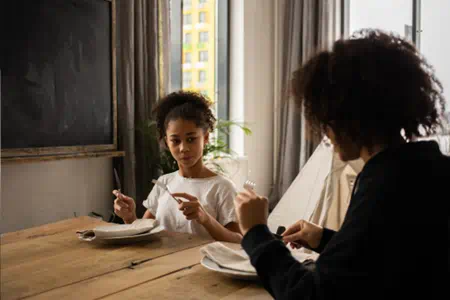This article appears in the summer 2017 Issue of Montessori Life Magazine. Read the full magazine online. (Members Only)
A few weeks ago, I arrived at a hotel to check in, only to find that my room would not be ready for quite some time. There had been a pop concert nearby the night before, attended mostly by moms and their teenage daughters. Apparently, the moms spent their after-event time at the bar, while their teens proceeded to trash their hotel rooms, blast loud music, and run wild in the hallways until 3:00 a.m. The next morning, housekeepers were overwhelmed by a tsunami of debris: lipstick on mirrors, teepeed beds, and wet trash everywhere. As I sat in the lobby contemplating this uncivilized behavior, I asked myself, How does this happen?
Parents want children to be polite, kind, and civilized. But what does it take to foster that outcome? Mammals, especially humans, are social learners. We gain knowledge from our environment and from other people, especially from those whom we love. Unfortunately, we learn both antisocial as well as pro-social behaviors by watching others.
So if there is anything you want your child to know how to do, or a way you want him or her to behave, you should first model it, then show him or her how to do it, offer lots of opportunities for practice, and finally, hold the child accountable.
Modeling
In the early years of life, we learn mostly by taking in the sensorial impressions of the world around us. A series of neural connections helps us imprint that which we see. The child watches what other people do and attempts to do it too. Research has shown that mimicry increases pro-social behavior in very young children (Carpenter, Uebel & Tomasello, 2013). If you want your children to wait their turn to speak, do that yourself. If you want your children to stay at the table during dinner, turn off your cell phone and stay seated yourself.

Practice
Think about what you want your child to learn—every- thing from when and how to say “excuse me,” to carrying on a phone conversation with Grandma, to holding the door open for someone with an armload of packages, to conducting oneself at a restaurant, in a theater, on an airplane, and at a hotel. We Montessorians call it adaptation to one’s culture (Montessori, 1964). Take it slow; you will have many years to inculcate these habits. Start with simple daily activities: “In our family, when we need to sneeze, we sneeze into our sleeve. Watch me. Now it’s your turn.”
Other Examples
For a young child—pushing in one’s chair after getting up from the table. For an Elementary-age child—lessons on how we treat those different from us. For an adolescent—house rules on texting and driving.
After you have modeled and practiced, hold your children account- able. If you use inductive statements, it will help the child discover for himself how to make the correction.

Some examples:
- For young children—“When you go back to the table and push in your chair, then you may be excused.”
- For an Elementary-age child—“Before we go over to the neighbor’s house to apologize for that bullying incident, you’ll come up with how you will make amends, which, as you remember, is part of apologizing.”
- For an adolescent (Dad, looking at a ticket for texting and driving)—“What happens now with your phone and car keys?”
- Finally, remember that your children really do want to learn all this. It’s how they feel competent and socially adept.


